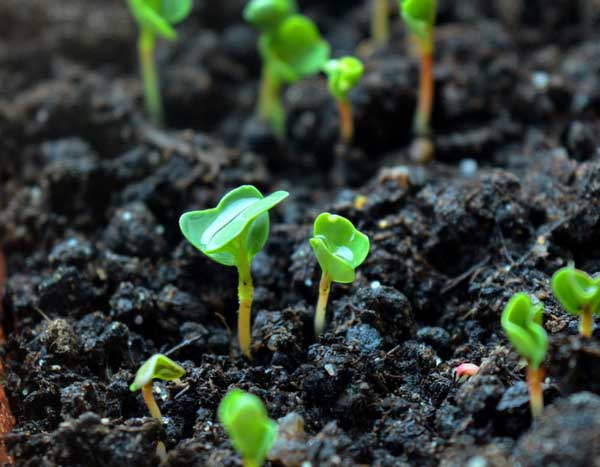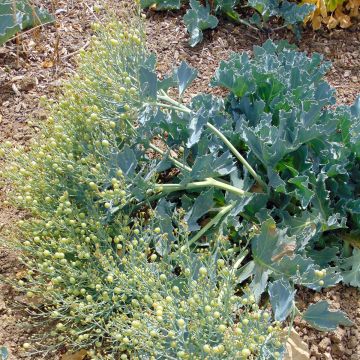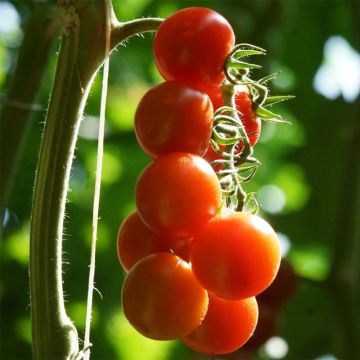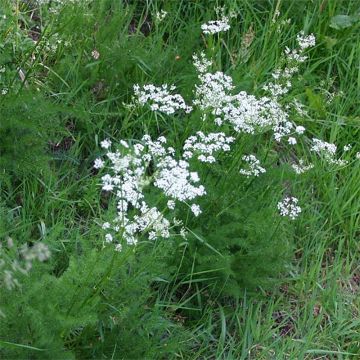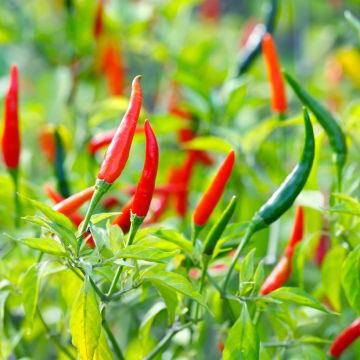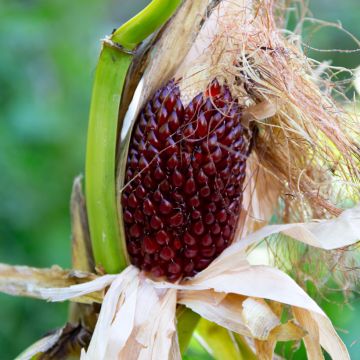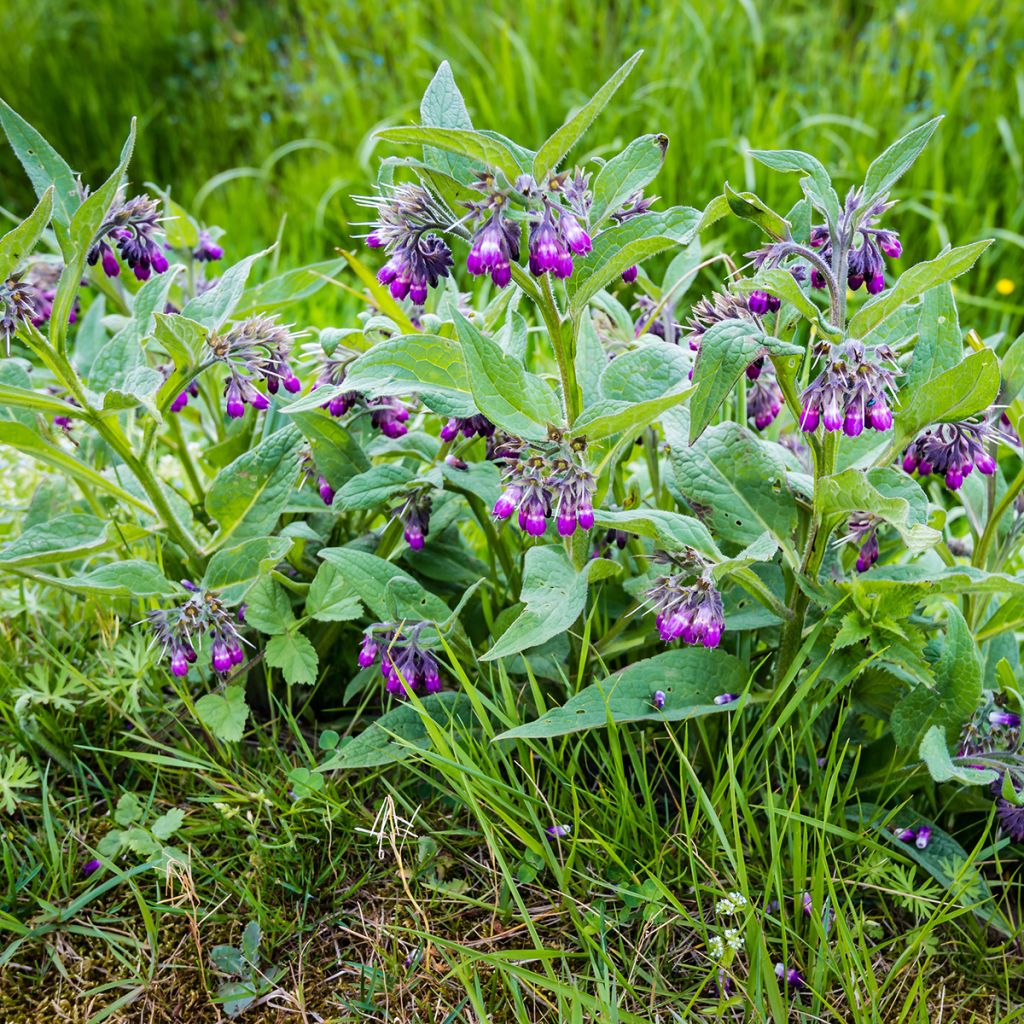

Symphytum officinale


Symphytum officinale


Symphytum officinale
Symphytum officinale
Symphytum officinale
Comfrey, Common Comfrey, Quaker Comfrey, Cultivated Comfrey, Boneset, Knitbone, Consound, Slippery Root
Pouch that weighs not 0.3g but actually 0.15g. I requested a replacement for another pouch which also weighed 0.15g.
Valou, 21/08/2023
Special offer!
Receive a €20 voucher for any order over €90 (excluding delivery costs, credit notes, and plastic-free options)!
1- Add your favorite plants to your cart.
2- Once you have reached €90, confirm your order (you can even choose the delivery date!).
3- As soon as your order is shipped, you will receive an email containing your voucher code, valid for 3 months (90 days).
Your voucher is unique and can only be used once, for any order with a minimum value of €20, excluding delivery costs.
Can be combined with other current offers, non-divisible and non-refundable.
Home or relay delivery (depending on size and destination)
Schedule delivery date,
and select date in basket
This plant carries a 6 months recovery warranty
More information
We guarantee the quality of our plants for a full growing cycle, and will replace at our expense any plant that fails to recover under normal climatic and planting conditions.
Description
The Common Comfrey, in Latin Symphytum officinale, has been known since ancient times as a medicinal plant, with countless virtues: in cooking, natural pharmacy, but especially in the garden as a fertilizer and phyto-stimulant liquid manure. It can be sown in spring and autumn, but ideally from March to June.
Also known as Greater Comfrey, Donkey's Ear, or Cow's Tongue, the Common Comfrey belongs, like Borage, to the Boraginaceae family. It is a perennial herbaceous plant native to Europe and Western Asia, which benefits from great hardiness and can withstand negative temperatures down to -30°C (-22°F).
The Greater Comfrey is vigorous and can reach, if the soil and conditions are suitable, a height of 1.2 metres (4 feet) and a width of 1.5 metres (5 feet). It grows in an erect clump, with upright stems and large green leaves covered in hairs. From May to July, it bears bell-shaped flowers, whose colour varies. It is sometimes considered a "weed" because it grows spontaneously in moist environments.
In cooking, its young leaves can be added raw to salads. Cooked, they can be stuffed, prepared in fritters, soups, or purees. The young flower buds, with a slightly marine taste, are cooked in the same way as broccoli or asparagus. However, be aware that although edible, its high alkaloid content makes it a plant to be consumed in moderation.
In pharmacy, its large leaves are used in poultices to treat minor injuries, as it facilitates healing and accelerates the consolidation of sprains. Excellent reparative balms, rich in allantoin, can also be prepared with its roots.
In the garden, Greater Comfrey is both ornamental and phyto-stimulating: very rich in potash and boron, Comfrey liquid manure complements Nettle liquid manure, which provides a lot of nitrogen. This liquid manure stimulates flowering and fruiting while improving foliar resistance. It can also be used as an activator for lazy compost and as a liquid fertilizer for the most demanding vegetables. It is also an excellent mulch: roughly chopped, Comfrey leaves decompose quickly, providing their nutrients to the soil. Finally, prepared as a decoction, it is a natural insecticide against aphids.
Lastly, it should be noted that it is a melliferous and nectariferous plant that will delight bees, bumblebees, and butterflies.
Harvest: it is carried out, from May to October, approximately every two weeks, by cutting the plant to about a third of its height.
Storage: Comfrey leaves can be well preserved by drying.
The gardener's little tip: Greater Comfrey easily multiplies, by dividing the stump but also by seed to the point of becoming... a bit too present. To enjoy its benefits without being overwhelmed by its spread, reserve a large space just for it, away from other crops, and remove any unwanted spontaneous seedlings if necessary.
Report an error about the product description
Symphytum officinale in pictures


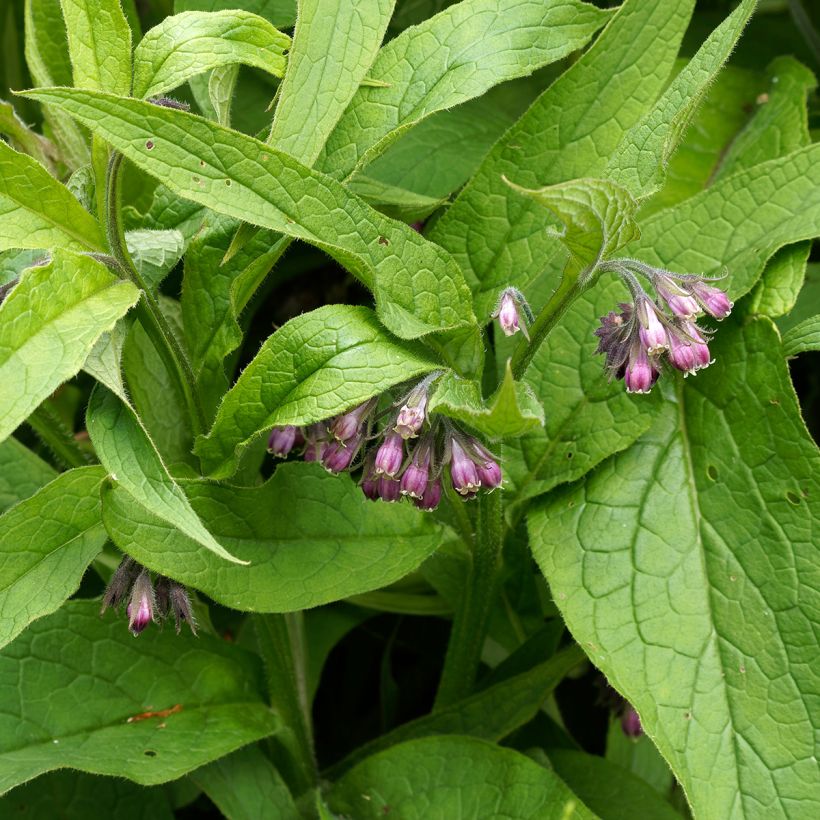

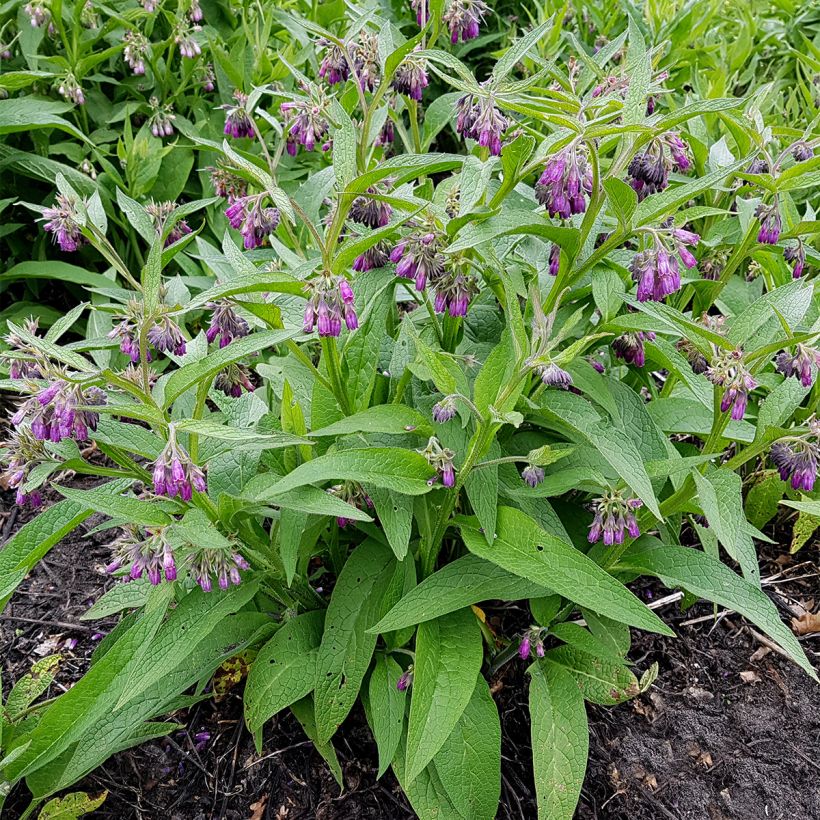

Harvest
Plant habit
Foliage
Botanical data
Symphytum
officinale
Boraginaceae
Comfrey, Common Comfrey, Quaker Comfrey, Cultivated Comfrey, Boneset, Knitbone, Consound, Slippery Root
Cultivar or hybrid
Perennial
Planting and care
Sowing:
Common Comfrey can be sown from March to June, in full sun or partial shade.
You can either directly sow the seeds in the desired location or prepare seedlings that will later be transplanted to their final position in the garden.
Preparing seedlings: In a nursery or in pots, sow the seeds at a depth of 1cm (0in) in a good seed compost. Cover lightly with compost and remember to keep the substrate moist but not waterlogged.
When the young plants appear strong enough to handle, transplant them into pots if necessary before planting them in the garden. When planting, follow the recommended spacing for direct sowing.
Direct sowing: Ideally, in moist, rich, and well-drained soil, create furrows about one centimetre deep, spaced 30 centimetres (12 inches) apart. Sow the seeds with enough space between them and cover with a thin layer of fine soil. Once the seedlings are well-developed, thin them out, leaving only one plant every 60 centimetres (24 inches).
Cultivation:
Common Comfrey can grow in almost any soil but prefers moist and fertile soil. Remember to water it a little during the first year to ensure proper establishment.
Seedlings
Care
Intended location
Planting & care advice
-
, onOrder confirmed
Reply from on Promesse de fleurs
Similar products
Haven't found what you were looking for?
Hardiness is the lowest winter temperature a plant can endure without suffering serious damage or even dying. However, hardiness is affected by location (a sheltered area, such as a patio), protection (winter cover) and soil type (hardiness is improved by well-drained soil).

Photo Sharing Terms & Conditions
In order to encourage gardeners to interact and share their experiences, Promesse de fleurs offers various media enabling content to be uploaded onto its Site - in particular via the ‘Photo sharing’ module.
The User agrees to refrain from:
- Posting any content that is illegal, prejudicial, insulting, racist, inciteful to hatred, revisionist, contrary to public decency, that infringes on privacy or on the privacy rights of third parties, in particular the publicity rights of persons and goods, intellectual property rights, or the right to privacy.
- Submitting content on behalf of a third party;
- Impersonate the identity of a third party and/or publish any personal information about a third party;
In general, the User undertakes to refrain from any unethical behaviour.
All Content (in particular text, comments, files, images, photos, videos, creative works, etc.), which may be subject to property or intellectual property rights, image or other private rights, shall remain the property of the User, subject to the limited rights granted by the terms of the licence granted by Promesse de fleurs as stated below. Users are at liberty to publish or not to publish such Content on the Site, notably via the ‘Photo Sharing’ facility, and accept that this Content shall be made public and freely accessible, notably on the Internet.
Users further acknowledge, undertake to have ,and guarantee that they hold all necessary rights and permissions to publish such material on the Site, in particular with regard to the legislation in force pertaining to any privacy, property, intellectual property, image, or contractual rights, or rights of any other nature. By publishing such Content on the Site, Users acknowledge accepting full liability as publishers of the Content within the meaning of the law, and grant Promesse de fleurs, free of charge, an inclusive, worldwide licence for the said Content for the entire duration of its publication, including all reproduction, representation, up/downloading, displaying, performing, transmission, and storage rights.
Users also grant permission for their name to be linked to the Content and accept that this link may not always be made available.
By engaging in posting material, Users consent to their Content becoming automatically accessible on the Internet, in particular on other sites and/or blogs and/or web pages of the Promesse de fleurs site, including in particular social pages and the Promesse de fleurs catalogue.
Users may secure the removal of entrusted content free of charge by issuing a simple request via our contact form.
The flowering period indicated on our website applies to countries and regions located in USDA zone 8 (France, the United Kingdom, Ireland, the Netherlands, etc.)
It will vary according to where you live:
- In zones 9 to 10 (Italy, Spain, Greece, etc.), flowering will occur about 2 to 4 weeks earlier.
- In zones 6 to 7 (Germany, Poland, Slovenia, and lower mountainous regions), flowering will be delayed by 2 to 3 weeks.
- In zone 5 (Central Europe, Scandinavia), blooming will be delayed by 3 to 5 weeks.
In temperate climates, pruning of spring-flowering shrubs (forsythia, spireas, etc.) should be done just after flowering.
Pruning of summer-flowering shrubs (Indian Lilac, Perovskia, etc.) can be done in winter or spring.
In cold regions as well as with frost-sensitive plants, avoid pruning too early when severe frosts may still occur.
The planting period indicated on our website applies to countries and regions located in USDA zone 8 (France, United Kingdom, Ireland, Netherlands).
It will vary according to where you live:
- In Mediterranean zones (Marseille, Madrid, Milan, etc.), autumn and winter are the best planting periods.
- In continental zones (Strasbourg, Munich, Vienna, etc.), delay planting by 2 to 3 weeks in spring and bring it forward by 2 to 4 weeks in autumn.
- In mountainous regions (the Alps, Pyrenees, Carpathians, etc.), it is best to plant in late spring (May-June) or late summer (August-September).
The harvesting period indicated on our website applies to countries and regions in USDA zone 8 (France, England, Ireland, the Netherlands).
In colder areas (Scandinavia, Poland, Austria...) fruit and vegetable harvests are likely to be delayed by 3-4 weeks.
In warmer areas (Italy, Spain, Greece, etc.), harvesting will probably take place earlier, depending on weather conditions.
The sowing periods indicated on our website apply to countries and regions within USDA Zone 8 (France, UK, Ireland, Netherlands).
In colder areas (Scandinavia, Poland, Austria...), delay any outdoor sowing by 3-4 weeks, or sow under glass.
In warmer climes (Italy, Spain, Greece, etc.), bring outdoor sowing forward by a few weeks.



































